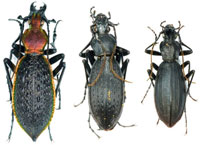We have moved to a new server!
Since March 2014, this website has been moved to this new server: http://web.ntnu.edu.tw/~treehopper/. This page will not be updated anymore. Please update your browser’s bookmark or the web links.
Member list
Current members
- Jo-Fan Wang
- 1. The Territorial Behavior of Euphaea formosa (Odonata). 2. Tempo and Mode of Pronotal Evolution in Membracis Treehoppers.
- Hung-Nien Chen
- 1. The effect of typhoon on survivalship of Matrona cyanoptera. 2. Modes of phenotypic variation in Euphaea amphicyana.
- Lan-Wai Yeh
- Yun-Chieh Cheng
- What do damselfly larvae eat? DNA barcode analyses of larval diet in Matrona cyanoptera and Euphaea formosa.
- Chung-Hsin Huang
- Flucuating Asymmetry and Developmental Asymmetry of Cyclommatus mniszechi.
- Hui-Yun Tseng
- 1. Biological function of coloration in Pachyrrhynchus tobafolius. 2. Phylogeny and color evolution of Pachyrrhynchus weevils. 3. Population genetics of Pachyrrhynchus weevils on Lanyu and Green Island.
- I-Ting Hsiao
- Variation of genitalia in Euphaea amphicyana.
- Yen-Ting Chen
- The effect of forest management of Mt. Da-Shiue on the morphological variation of a ground beetle, Carabus (Apotomopterus) masuzoi.
- Jyun-Huei Huang
- The fighting behavior of a stag beetle, Rhaetulus crenatus.
- Shi-Ting Wu
- Membracis Phyllotropis.
- Chiao-Wei Lin
- The fighting behavior of a stag beetle, Rhaetulus crenatus.
- Yong-Chao Su
- Behavioral ecology, sociobiology, population genetics, and molecular phylogenetics.
Past members
- Wei-Liang Xiao
- Variation of wing veins in Euphaea amphicyana.
- Li-Wen Weng
- Why do firefly larvae emit light?
- Yat-Hung Lee
- Speciation of Euphaea damselflies.
- Che-Yu Kuan
- Variation of mandibles in stag beetles.
- Chu-Yen Cheng
- Phylogeography of a Philippine's treehopper, Leptocentrus reponens.
- Ming-Yu Chen
- Phylogeography and population history of the treehoppers, Centrochares horifficus from the Philippines Archipelago.
- Shao-Chang Huang
- Visual Communication of Matrona cyanoptera
- Jen-Pan Huang
- Population Genetics and Phylogeographic Analyses of Formosan Damselfly, Euphaea Formosa (Insecta: Odonata: Euphaeidae) from Taiwan
- Wei-Yun Chen
- Molecular and Phylogenetic Characterization of Endosymbiotic Bacteria of the Froghopper, Okiscarta uchidae (Insecta: Hemiptera: Cercopidae)
Visiting scholars and students
- Vanitha Williams
- Predatory potential of waterbug, Diplonychus rusticus and dragonfly, Diplacodes trivialis on mosquito larvae.
- Marina Vilenica
- Dragonfly composition (Insecta, Odonata) in wetland area of Turopolje region, Croatia
- Klaas-Douwe 'KD' B. Dijkstra
- History, diversity and identification of dragonflies and damselflies (Odonata).
- Erin McCullough
- " Diversification of weapon form: aerodynamic costs of beetle horns.
- Ashley E. King
- Intrasexual combat and intersexual antagonistic co-evolution in horned beetles.
Lan-Wai Yeh

Title
PhD Student 2010
Species: Carabus

Project
Ecology and evolution of Taiwanese Carabus ground beetles.
Abstrct
E-mail:lanwai37@yahoo.com.tw
The geographic variation in body size and shape of an organism may reflect the underlying evolutionary processes, including inter- or intra-species interaction, niche differentiation, and the history of the species. Carabus (Apotomopterus) masuzoi (Imura et Sato, 1989) is an endemic ground beetle species distributing in high mountains of the central Taiwan. All members of Carabus beetles are wingless and considered to have low dispersal capacity. We analyzed the geographic pattern of body size and shape variation in two C. masuzoi populations from Mt. Ta-Hsueh Shan and Mt. Tai-Ping Shan. We measured the body size of 25 males and 25 females for each populations and used a total of 62 landmarks of different ventral body segments. Our results showed that the overall ratio of female to male body length was 1.06, and the sexual difference in body size of the two populations were 1.08 (Mt. Ta-Hsueh Shan) and 1.05 (Mt. Tai-Ping Shan).The female body length of each of the two populations (22.72 ± 0.74 mm in Mt. Ta-Hsueh Shan, 23.98 ± 0.97 mm in Mt. Tai-Ping Shan) were significantly greater than that of males (20.68 ± 0.74 mm in Mt. Ta-Hsueh Shan, 22.78 ± 0.94 mm in Mt. Tai-Ping Shan) (p< 0.000). Female and male body lengths of Mt. Tai-Ping Shan were greater than that of Mt. Ta-Hsueh Shan (p < 0.000). The mean shape of head, pronotum and abdomen between the two populations were significantly different as indicated by bootstrap resampling F-test (p=0.004, 0.0044 and 0.0047, respectively). When the body size becomes greater, the body shape of the beetles appears to become more flatter. Our results suggest that the landmark-based geometric morphometrics is useful for quantifying the body size and shape variation of C. masuzoi populations, and the beetle population from Mt. Ta-Hsueh Shan and Tai-Ping Shan differ substantially in external morphology which may reflect the influence of ecological and evolutionary processes.